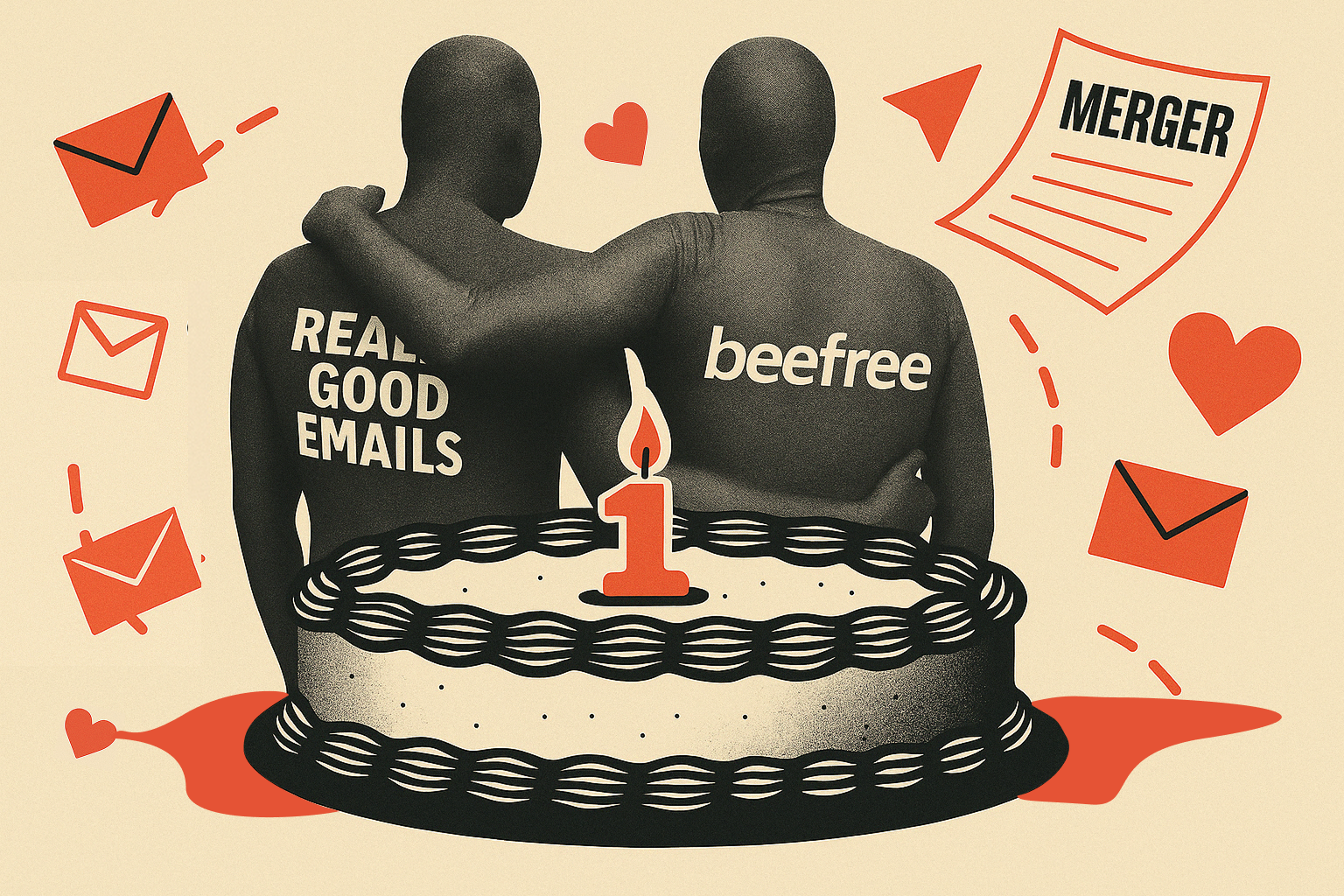Anitra: So, yeah, I've seen a few familiar faces here today, but for those who don't know me, my name is Anitra Fenderson, and I have been on the messaging experience, design, development, and innovation team at Capital One for around 16 years. When I started there, I was the third designer developer, and now we have a team of around 66 total. So it's a massive team, and we do everything from design development, email, SMS, push, a little bit of everything. Today, I'm excited to chat with you guys about copy, specifically as professionals in the messaging space. We are always asked to push limits, to test content options, and figure out what is going to have the most significant impact on our audiences. And if your teams are tasked with creating some interesting new content to wake up or engage your audience, or you are exploring the world of AI text content generation to get better response rates, having declared governing principles over your text content will ensure that it is not to the detriment of your brand. So let's talk about each of these things a little deeper.
First, you have to set overarching principles for how content exists across your brand. Some examples of these principles could include things like the content of the message fulfilling the customer's expectation from the subject line, not tricking people into clicking or opening, and using language that is clear and purposefully direct. In general, none of these things are necessarily right or wrong, but they have to make sense for your brand and your relationship with your customers. By setting these principles, everyone in your team and in your company understands and aligns on the boundaries to work and test within. This was important when we had an outside partner come in to work with us and suggest test ideas. This was many years ago, but they were very insistent that we try testing a purple button. I'm not sure how many of you know Capital One's color scheme, but purple is not in it. And so I responded and said, that doesn't align with our brand standards or our colors. And they said, well, but what if it wins? And I had to say, I don't really care if it wins because we will never use it. We have set colors for a reason; we don't just randomly diverge from that. So the point is, by having stated overarching principles, it made it very easy to say no to this suggestion and avoid negatively impacting our brand.
Second, ensure that your brand personality and voice are reflected in your language choices, whether human or AI-generated. Be sure to ask yourself things like: does this still sound like our brand? Is the word choice aligned with how our brand exists in all of our channels? Will this compromise a relationship just to get a short-lived response? Or could this word choice or phrasing cause concern? In essence, don't compromise your brand by creating distrust with your word choices. Using false urgency or concern to get an open can ultimately degrade trust in all of your channels and leave the customer feeling annoyed or misled. On the flip side, using a very playful or casual tone can do the exact same thing if that isn't your typical interaction that you have with your customers. Regardless of any options or tests that you try, you still need to sound like you and maintain the relationship that you've built with your customer.
Third, establish rules around formatting and emoji usage in your content. Again, whether human or AI-generated, some types of guidance to consider: don't use punctuation as random decoration. Obviously, this depends on your brand's voice and your relationship with your customer, as well as your industry or products. Some brands may be able to play with this type of treatment, but the bottom line is that it has to match the relationship that you've already created. I also recommend using emojis sparingly, and don't use them to replace text, only to enhance the message with a purpose. You also need to be conscious of the experience that screen readers have with emojis and how interruptive they can be. In case you're not aware, customers using screen readers will hear the description read out loud of what the emoji is, which makes for a very disjointed experience. The amount of emojis that you can use obviously depends on the brand, and I'm sure that we all have personal experiences with brands that use tons of emojis and use them very successfully. But my point is, for your brand, you need to decide what makes sense and then align to those standards to not cause confusion, concern, or distrust.
Finally, determine a set of approved emojis that align with your brand standards and that render consistently across the board, and then test anything outside of that list. Do research, see what your customers think about various emoji usage. You may find that it makes no difference at all. Don't waste your time, don't worry about it. Couple that with inbox testing to make sure that all of the emojis that you're choosing render the way you want across all clients. Again, depending on the brand, these rules will vary drastically, but it's the consistency and the relevance of the usage that can really make or break it. To illustrate how this can come to life, here are a few overall dos and don'ts to put into practice specifically for subject lines.
Quick disclaimer: all of these upcoming examples I'm going to show and discuss came from my personal inbox, so don't judge me, and know that I'm not trying to call anyone out; it's simply my opinions or my reaction to receiving them.
In the screenshot here, you'll see many tactics and marketing ideas that all of us have likely tried at one time or another: exclusivity, urgency, quirky language, all caps, incentives, blunt talk, and crazy wording. But obviously, based on the brands that we represent, we don't all have the opportunity to do all of these things. So first of all, as you explore ideas, ask yourself if the email content matches the user's expectation from the subject line. If not, try again. Don't place open or click rates above the user experience.
The examples at the top of this list are all very clear. They're to the point; they tell me what I need to know or why I am getting the email that they're sending. The examples at the bottom are less so in that they nearly all don't tell me why I should even bother opening the email to begin with. Although in most cases I know the company from the name, I still can't even guess what the email is about, and for me, that almost always equals a deletion because it's not important enough for me to care.
Quick cautionary tale: the loan notification email was actually a servicing message related to a real loan, but I didn't even recognize it because they changed the from name from the company name to "Your Benefits Center." I'm sure that somebody thought that would be really helpful and a great idea, but it definitely was not. Next recommendation: use strong action-oriented language, but only when customers need to take action.
Let me start by saying you should absolutely use urgency language when it's appropriate, and your customers will appreciate it when it shows that you're looking out for them. All of the examples at the top illustrate this because in each case, I would have been impacted in some way if I hadn't known this information or taken action. The examples at the bottom were not as good, in my opinion, because each one didn't help me or make me feel looked after.
- The PetMeds email was an actual issue with an order I placed, but I missed it for weeks because it looked so much like spam that I just scanned right over it, thinking that it was junk that had slipped past my filter.
- The Walgreens message was confusing because I do get prescriptions there. I questioned if I had missed picking something up, but it was so vague that I couldn't tell. Then I opened it, and "8/31" was simply the end-of-summer sale, and I was irritated because I felt tricked.
- Finally, the Torrid subject line is the kind of false urgency that many of us in retail use, but they used it so often that it hit my last nerve, and I unsubscribed. It wasn't the final weekend. I knew they would have another sale next month because they'd sent similar messages all year long, and it just ended up having the opposite effect on me than what they intended.
So, the bottom line is to use urgency in a legitimate way. Help, don't irritate your customers, whom you have worked so hard for. Consider using formatting elements like brackets to call out when the content is time-sensitive, like fulfilling a necessary step in a process, or if the customer is at risk for losing something. These are places where you really need to highlight that something is important to the customer. This sort of goes hand in hand with the previous slide about urgency, but focuses more on the actual formatting of the subject line. In the examples at the top, the bracketed language and the all caps really felt helpful to me. They felt necessary and not scary. It called out a point or clarified a point in the subject line. In the examples at the bottom, the formatting starts to feel spammy, and the language doesn't align with what the message is actually about.
For me, they didn't encourage me to take action or open the email, but instead made me question the integrity of the brand that I received them from, and it just felt kind of yucky. Finally, for my last recommendation, consider using emoji or creative language if it's appropriate for the audience. It complements the content and has a strategic purpose.
Don't use these informal elements if they don't align with your audience's expectations of your brand. All the ones at the top, I felt that the emojis or the language really complemented the message or reinforced the brand personality that I've come to know. These first two examples at the bottom, the reason I have them locked together is that's how they appeared in my inbox, and when I read them, this shows what can unknowingly happen when you include emojis in your email. With the ModPools email, they intended to point down to their own content, but in my inbox, as I read it, I instinctively looked down to the next message talking about my Nintendo Points balance. It's silly because obviously that wasn't right, but it's what it drove me to do, and so you just have to be really careful thinking about how things like that will end up once they leave you and land in someone else's inbox.
The final example at the very bottom illustrates why you need to test your emojis everywhere, because I'm fairly certain Virginia Public Media did not intend to include the raised eyebrow emoji indicating apprehension when they sent out their wonderful stories of Christmas traditions email at the end of last year.
The last thing I'll leave you with is to be sure to always consult your brand or design standards when creating any kind of content. And if you don't have any, see if you can partner with those teams to create them or create them yourself, even if it's just a list for yourself to follow and stay accountable. In my world, we created something called the message review board. It looks out for brand standards, email best practices, design system alignment, accessibility, and more.
Having something to tie back to will always give you that reason to say, how about maybe we don't do that, because this is what we've agreed on, and this is how we're going to do it.


